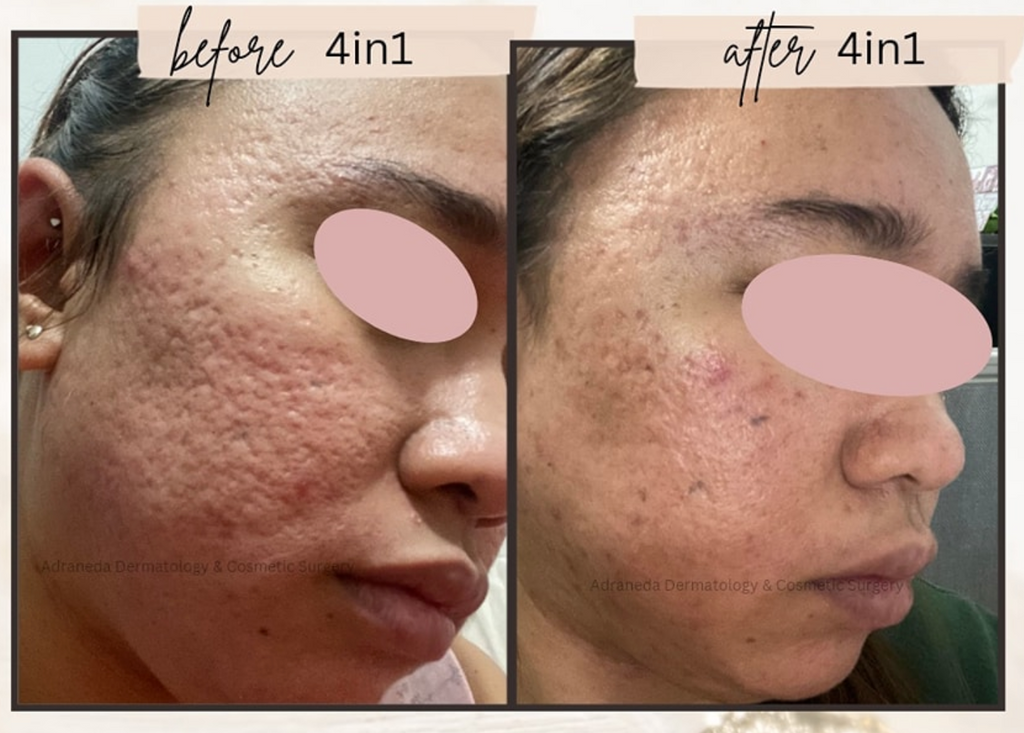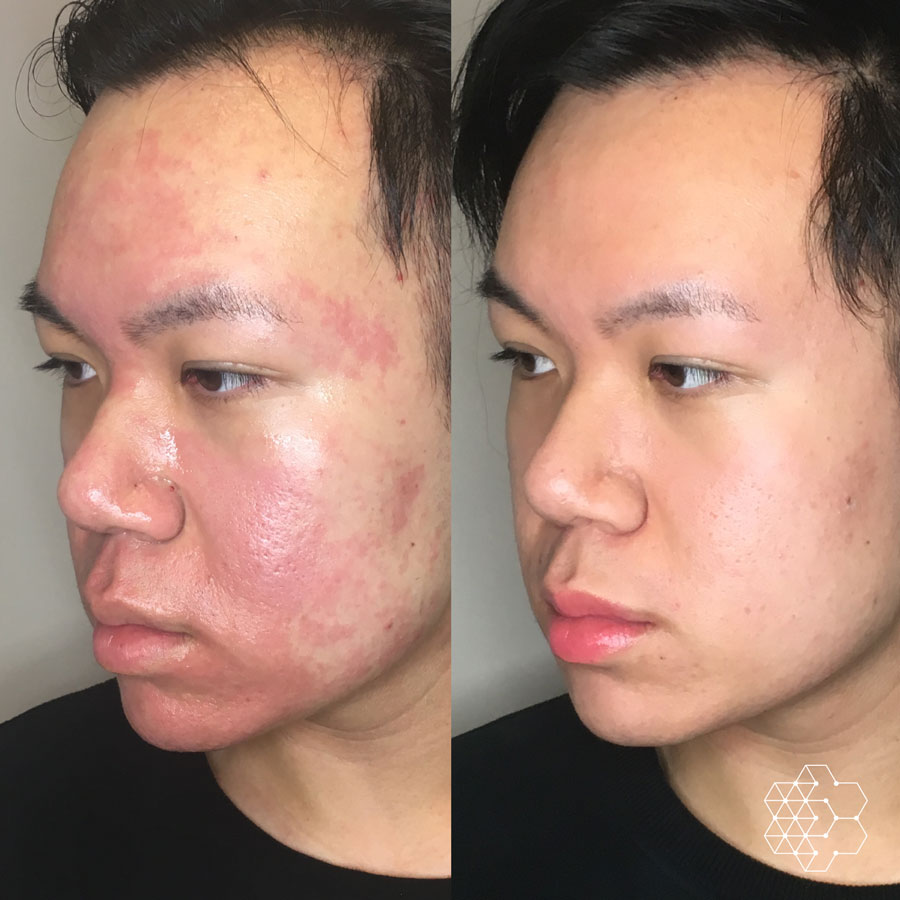Skin Rejuvenation Treatments: Renew Your Skin and Minimize Acne Scars
Checking Out Skin Problem: Dealing With and recognizing Acne Scars for Healthier Skin
Acne scars stand for a considerable issue for individuals looking for to keep healthy and balanced skin, as they can affect both appearance and self-worth. Recognizing the numerous kinds of scars, from atrophic to hypertrophic, is essential for figuring out proper treatment choices. While specialist interventions like chemical peels and microneedling can be reliable, the relevance of customized care plans can not be overemphasized. In addition, preventative measures play an essential role in reducing future scarring. As we discover these aspects, one must consider just how the right strategy can cause transformative outcomes.
Recognizing Acne Marks

The body's natural recovery procedure can lead to either atrophic marks, which show up as clinical depressions in the skin, or hypertrophic scars, which are raised and arise from overflow of collagen. Furthermore, the emotional toll of acne marks ought to not be undervalued; lots of people report feelings of shame, anxiousness, and reduced self-worth. This psychological problem can affect social communications and general high quality of life.
Attending to acne scars calls for an extensive understanding of their development and effect. Understanding of the potential for long-lasting consequences connected with without treatment scars can inspire people to look for proper therapies. Early intervention and efficient management approaches can considerably enhance skin look and improve emotional durability, highlighting the value of recognizing the intricacies surrounding acne scars.
Sorts Of Acne Scars
Acne marks can be classified into unique types, each showing distinct qualities and calling for specific therapy strategies. acne treatment for sensitive skin. The key kinds of acne marks consist of atrophic, hypertrophic, and keloid marks

Hypertrophic marks, in contrast, are raised above the skin level and are the outcome of too much collagen manufacturing throughout the healing process. They generally continue to be within the boundaries of the initial acne sore. Keloid marks are comparable yet prolong beyond the initial injury website, creating bigger, raised locations that can be itchy or excruciating.
Comprehending these sorts of scars is necessary for choosing appropriate treatment options. Various scars might react better to certain treatments, such as laser therapies, fillers, or surgical interventions, stressing the relevance of a customized technique to acne mark monitoring.
Identifying Your Marks
Acne scars typically drop into 2 categories: hypertrophic and atrophic marks. These can further be classified into ice-pick scars, boxcar scars, and rolling marks, each showing unique features and needing various approaches for assessment.
Hypertrophic marks, on the other hand, are increased and take place because of too much collagen production during the healing process. Identifying the specific functions of your marks-- such as depth, texture, and width-- is necessary for correct recognition (skin rejuvenation treatments). In addition, consider the circulation of marks across your skin, as this can show the seriousness and duration of the acne problem
Engaging with a dermatologist can give valuable understandings right into the nature of your marks, helping in the distinction between numerous kinds. A detailed understanding of your scars will ultimately lead to a much more tailored and reliable therapy strategy, making sure a more clear and healthier complexion.
Therapy Alternatives Available
Determining the specific kind of acne marks present on your skin prepares for checking out efficient treatment choices. Usual types of acne scars consist of atrophic (clinically depressed), hypertrophic (increased), and post-inflammatory erythema.
For atrophic scars, alternatives such as chemical peels, microneedling, and laser resurfacing are widely used. Chemical peels make use of acids to eliminate the outer layer of skin, promoting brand-new cell growth.
Hypertrophic scars can be treated with corticosteroid injections to flatten the scar or laser therapy to reduce redness and enhance look. Silicone gel sheets and pressure dressings might likewise aid in taking care of increased scars.
In addition, dermal fillers can temporarily fill out anxieties Click Here from atrophic scars, while surgical excision might be ideal for extreme instances. Each therapy option has its considerations and advantages, making it important to seek advice from a dermatologist. They can offer individualized suggestions based upon the type and seriousness of your marks, as well as your skin type and overall health and wellness.
Tips for Prevention
Reliable avoidance techniques can considerably reduce the chance of establishing acne scars. The initial step is to keep a consistent skincare routine have a peek here that consists of mild cleaning, peeling, and moisturizing. Using non-comedogenic products assists protect against stopped up pores, which can exacerbate acne. Additionally, integrating topical therapies consisting of salicylic acid or benzoyl peroxide can efficiently decrease and handle outbreaks inflammation.
Staying clear of the desire to select or stand out acne sores is critical, as this can result in much deeper skin damage and increase the threat of scarring. Instead, think about using a cold compress or over-the-counter therapies to lower swelling and soreness.
Sun protection is another essential facet of prevention; ultraviolet (UV) rays can darken scars and impede the recovery procedure. Using a broad-spectrum sunscreen with at the very least SPF 30 daily can safeguard the skin and promote also recovery.
Lastly, preserving a balanced diet plan rich in anti-oxidants, minerals, and vitamins sustains skin health and recovery. Remaining moisturized and handling stress and anxiety degrees can likewise play a considerable role in reducing acne flare-ups. By executing these methods, people can considerably lessen their possibilities of developing acne marks.
Verdict
In verdict, understanding and recognizing acne scars is vital for efficient therapy and achieving healthier skin. Numerous types of acne scars, including hypertrophic and atrophic scars, necessitate details interventions customized to individual demands.
The body's all-natural healing process can result in either atrophic scars, which show up as clinical depressions in the skin, or hypertrophic scars, which additional info are increased and result from overproduction of collagen. They are further split into 3 subtypes: ice choice scars, boxcar marks, and rolling marks. Acne scars generally fall into two classifications: atrophic and hypertrophic scars. These can even more be categorized right into ice-pick marks, boxcar scars, and rolling marks, each showing distinctive attributes and calling for various methods for analysis.
Various kinds of acne marks, consisting of atrophic and hypertrophic scars, demand certain interventions customized to specific requirements.